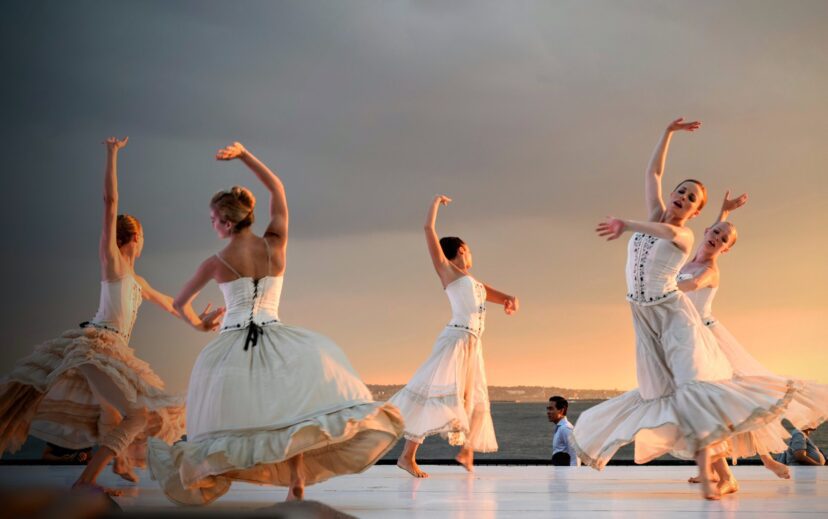A choreographic work is one where the “composition and arrangement of a related series of dance movements and patterns are organized into a whole.” It may be used to convey a story, theme or abstract concept and can include elements such as rhythmic movements of the body and the sequence of those movements.
Choreography is a form of creative expression that is protectable under federal copyright law. It is among the categories of works that may be protected under the U.S. Copyright Act as stated in Section 102(a)(4).
A pending case poses new considerations about the classification. In Tracy Anderson Mind and Body, LLC, et al. v. Megan Roup, et al., filed on July 12, 2022, the plaintiff alleges that a former employee of the Tracey Anderson fitness method brand committed copyright infringement for copying a choreographed fitness routine and using it as her own. A ruling by the court in plaintiff’s favor could potentially expand the copyright office’s definition of “choreography” to encompass workout routines.
Learning what elements are required in order to protect your choreography work by copyright can help you protect your intellectual property.
Is My Choreography Protectable By Copyright?
Under the Copyright Act, ideas are not protectable, only the expression of those ideas may be copyrighted. In the choreography context, some categories of dance and non-dance movements, such as sports activities and performance art, do not fall within the subject matter protected under the Copyright Act even though they may be unique. The Copyright Office outlines that the following types of choreography may not be copyrighted:
- Common place movements or gestures (like yoga poses);
- Social dances (like line dances, ballroom dances and etc.);
- Ordinary and athletic movements (like workout routines).
How Do I Copyright My Choreography?
If a choreographic work is not excluded, as above, then it is protectable by copyright when three conditions are met: (1) it is an original work, (2) it is an expression as opposed to an idea and (3) it is “fixed in any tangible medium of expression.”
- Is My Choreography Original?
The originality requirement is a fairly low bar to meet – a work can still be original when it contains movements that did not originate with the choreographer (such as an original combination of standard ballet positions) or even if it is derived from a preexisting choreographic work (for which permission may be required if it’s not in the public domain) or other type of copyrightable subject matter. The standard requires that the choreographer adds a substantial amount of new material that is independently created.
- Is My Choreography More Than An Idea?
Copyright does not protect ideas, so to receive copyright protection, choreography must be expressive. Movements such as sequences of yoga poses tend to be seen as unprotectable ideas rather than copyrightable expression. If a series of movements serves basic functional purposes, for example a certain athletic stretch routine, these will not be considered choreographic works.
- Is My Choreography Fixed?
Because choreography is an intangible, as opposed to material, art form, it is not automatically “fixed” the way a painting or a sculpture might be. Choreography may be fixed by (1) transcribing the movement using standard dance notation, such as Labanotation or Banesh Dance Notation; (2) documenting the movement in textual descriptions, photographs or drawings; or (3) making a video recording of a performance of the choreography.
Who Owns The Copyright In My Chhorreography?
Once a choreographic work has met these requirements, the owner of the work enjoys certain exclusive rights, whether or not the work is registered with the U.S. Copyright Office. Nonetheless, it is best practice to register your copyright, in order to have the most protection over your choreography. The Copyright Office website allows you to register your work online.
Understanding who owns the copyright is not always straightforward. Section 201 of the Copyright Act outlines ownership. The general rule is that the copyright “vests with the author” – whoever created the choreography owns it. Dance contracts often explicitly state who owns the copyright to the choreography under the contract and usually ownership of the rights belongs to the choreographer. Theatrical unions, namely the Dramatists Guild of America and the Stage Directors and Choreographers Society, often encourage theatre industry professionals, including choreographers, to retain ownership of their copyrighted works.
On the other hand, if you create a work made for hire, “the employer or other person for whom the work was prepared is the initial owner of the copyright unless both parties involved have signed a written agreement to the contrary.” Your choreography routine would be considered a work made for hire if you are an employee and you prepared it in the scope of your employment or if it was “specially ordered or commissioned for use (1) as a contribution to a collective work, (2) as a part of a motion picture or other audiovisual work, (3) as a translation, (4) as a supplementary work, (5) as a compilation, (6) as an instructional text, (7) as a test, (8) as answer material for a test, or (9) as an atlas.” A “specially commissioned” work for hire must be documented in a written agreement. Choreographers who are hired to create a piece for a dance company, production company or other entity may find themselves under the work for hire category if they are hired as an independent contractor. This is often the case in the theme park, cruise line and community theatre industries.
How Can I License Choreography?
If you don’t own the copyright to the choreography you may license that preexisting choreography for a new production of a show. There are three primary ways to obtain the license: (1) theatre rights licensing agencies, (2) individual choreographers and choreographers’ trusts and (3) choreography licensing companies.
- Theatre Rights licensing Agencies
Theatre rights licensing agencies, such as Music Theatre International and Theatrical Rights Worldwide, streamline the licensing process, representing both producers and choreographers.
- Individual Choreographers And Choreographers’ Trusts
When choreography is owned by a living choreographer or by a choreographer’s trust, it is best to apply for a license by sending a letter of request directly. Most choreographer trusts have websites where inquiries can be sent, such as the Jerome Robbins Trust, Merce Cunningham Trust and The George Balanchine Trust, with specific instructions for how to send licensing requests.
- Choreography Licensing Companies
A newer option for licensing choreography are companies like The Original Production, which provide the opportunity to pay a licensing fee to receive the performance rights to choreography, as well as instructional videos and insights from the choreographers.
Conclusion
Choreography is a protectable form of intellectual property. Whether you are a professional choreographer seeking to protect your work or a beginner looking to get started in the industry, you should be aware of your rights and obligations with respect to creating or licensing choreographic works. Contact an experienced copyright attorney to learn the best practices for your project.






